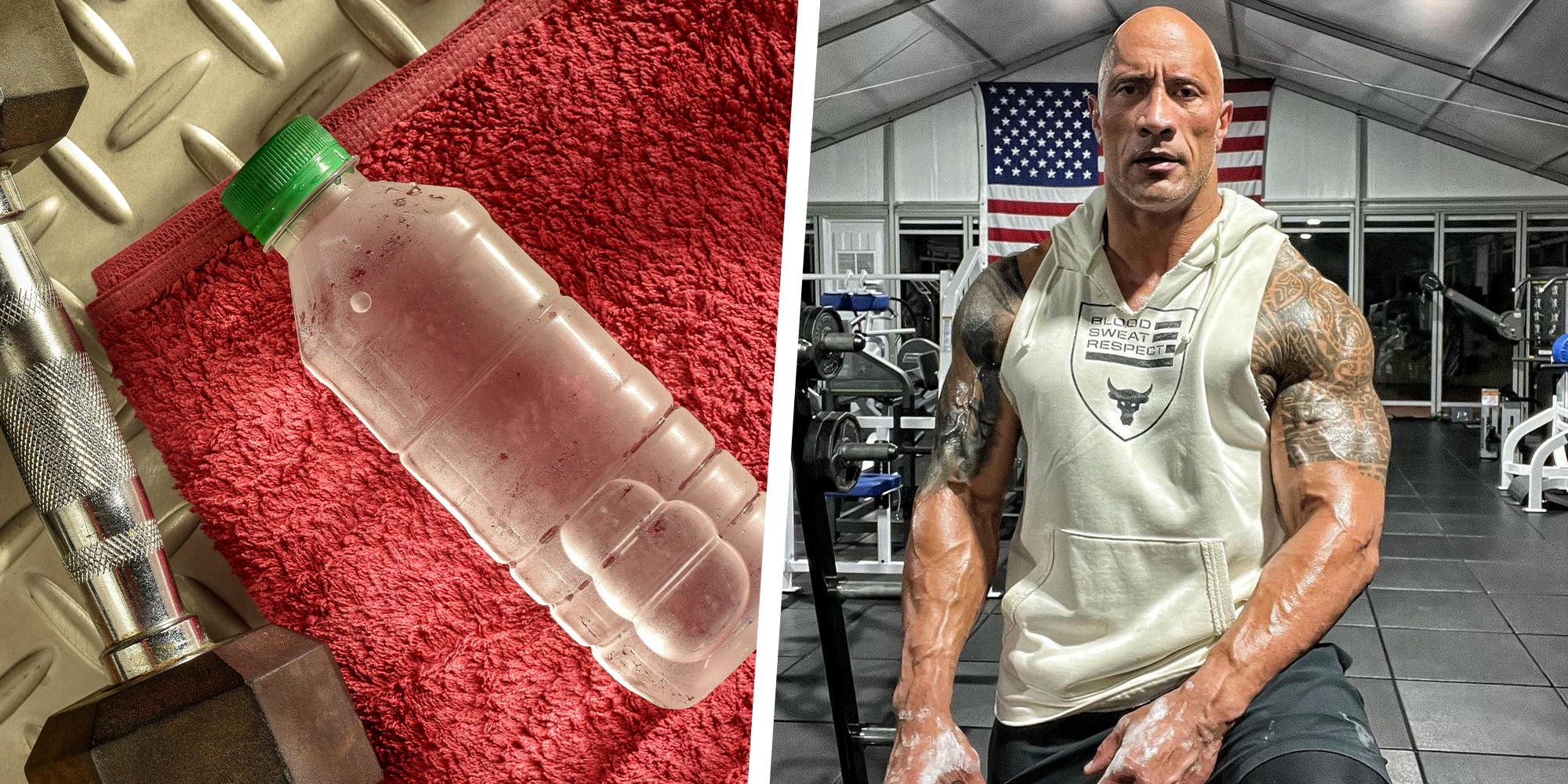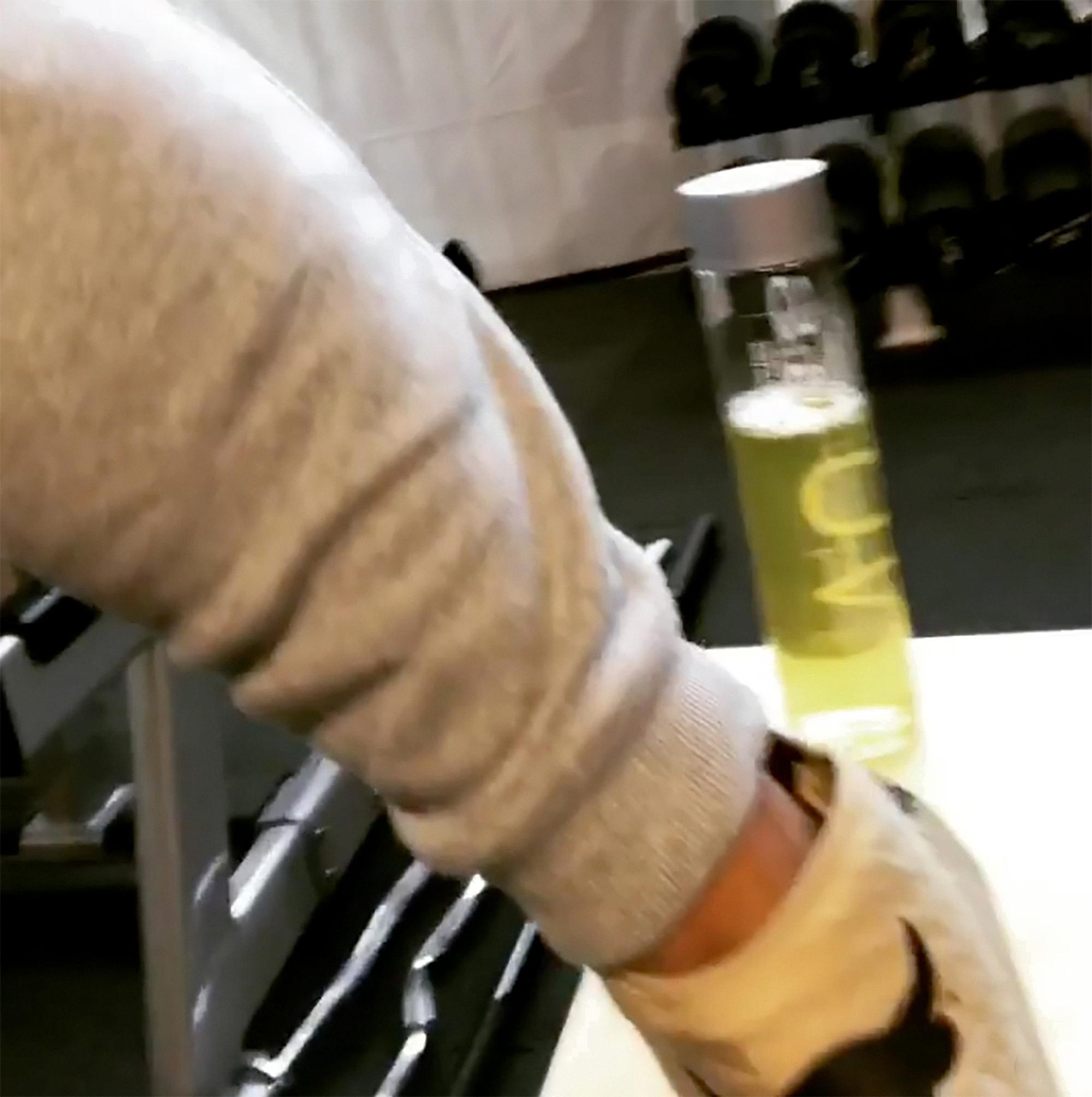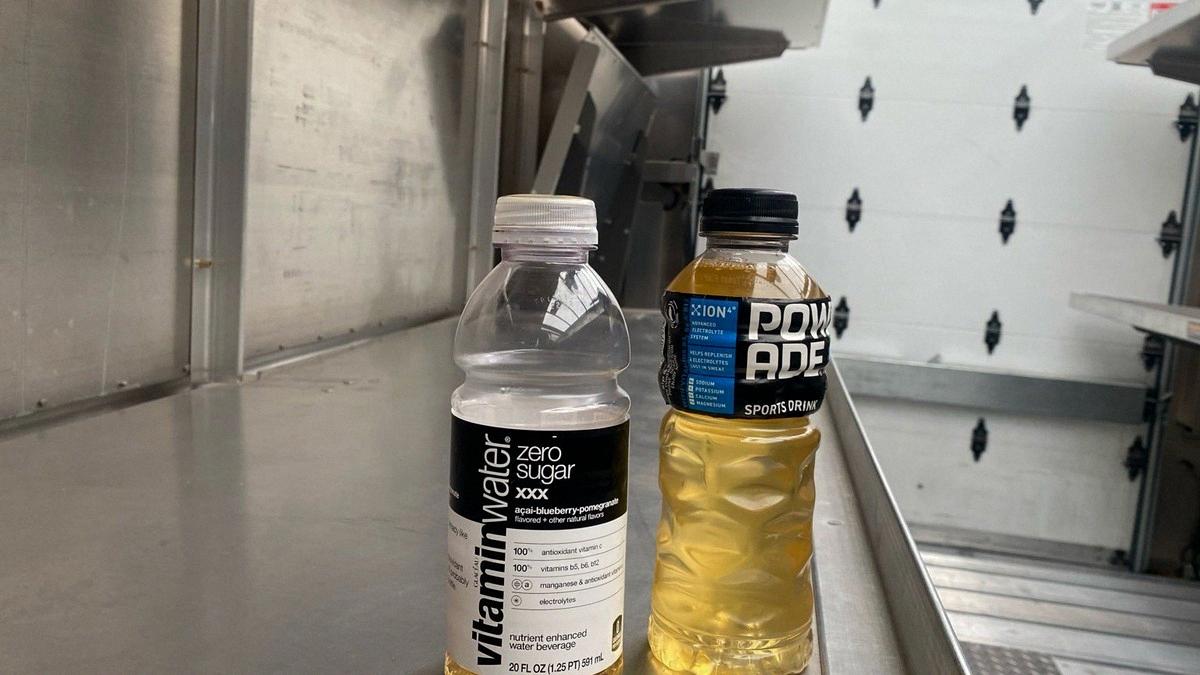Peeing in a bottle has become a common practice for many people, whether they are on the go or simply want to avoid leaving their current location. There are various reasons why someone might choose to pee in a bottle, including convenience, distance from a toilet, privacy concerns, or even as a means of adding urine to a compost heap.
When it coes to choosing a bottle for this purpose, there are several factors to consider. Glass and plastic are the most popular options, with plastic being the more commonly chosen option due to its unbreakable nature. However, if you are committed to sustainability, metal could be a viable option as well.
In terms of maintaining your urine bottle, it is crucial to keep it clean and sterile. Regular cleaning with soap and water, as well as disinfecting with alcohol or bleach, can help prevent any potential bacteria buildup. Additionally, it is important to ensure that the bottle has a secure lid to prevent any spills or unpleasant smells.
It should be noted that while urine is sterile, it can develop an odor over time if left uncleaned or if the bottle does not have a lid. Therefore, it is crucial to dispose of the urine properly and clean the bottle regularly to avoid any unpleasant smells.
Some tips for keeping your urine bottle within reach and accessible include having multiple bottles on hand, keeping them in a designated spot in your vehicle or backpack, and choosing a bottle with a wide mouth for easier use.
Peeing in a bottle can be a convenient solution for those on the go or in situations where a toilet is not readily available. However, it is important to maintain proper hygiene and cleanliness to avoid any potential health risks or unpleasant smells.
The Reasons Behind People Peeing in Bottles
There are multiple reasons why people may choose to pee in a bottle instead of uing a toilet. One of the most common reasons is convenience. If someone is in a situation where they are unable to access a restroom or it may be too far away, peeing in a bottle can be a quick and easy solution.
In some cases, the weather may also play a role. If it is too cold or uncomfortable to walk to a restroom, using a bottle can provide warmth and privacy. Additionally, some people may not have access to a toilet or prefer to avoid using a public restroom due to hygiene concerns.
It is also worth noting that in some areas, outdoor peeing may be considered illegal and result in being added to the Sex Offenders Register. In these cases, using a bottle can be a safer and more discreet option.
Some individuals may choose to save their urine to add to a compost heap. Urine is a valuable source of nitrogen and can be used as a natural fertilizer for plants.
While it may not be the most conventional method, peeing in a bottle can serve as a practical solution in certain situations.
Source: reddit.com
The Consequences of Peeing in a Bottle
If you pee in a bottle, several things could happen depending on the circumstances. Firstly, if the bottle is not clean or sterile, you could introduce bacteria or other pathogens into the urine, whih may cause an infection if you or someone else were to come into contact with it. Additionally, if the bottle is not properly sealed, the urine may leak out and cause a mess or unpleasant smell.
However, if the bottle is clean and sterile, and properly sealed, the urine by itself should not cause any harm. Urine is a sterile liquid produced by the kidneys that contains waste products and excess fluids from the body. As long as you do not have an infection, your urine is generally safe to handle, dispose of, or even use in certain medical or scientific procedures.
It’s worth noting that peeing in a bottle is generally not a recommended or hygienic practice, especially if there are other options available. If you’re in a situation where you need to urinate and don’t have access to a bathroom or other facilities, it’s best to find a private and sanitary location to do so.
The Smell of Pee in a Bottle
Pee in a bottle can smell, especially if it is not emptied or cleaned regularly. Urine contains a high concentration of urea, which can break down into ammonia over time, causing a strong and unpleasant odor. Additionally, if the urine bottle is not properly sealed or stored in a well-ventilated area, the smell can become even more pungent. It is important to regularly empty and clean urine bottles to prevent the buildup of bacteria and unpleasant odors. Using a lid or cap on the bottle can also help to contain the smell.
Using a Bottle to Urinate
There are a few options for what to use to urinate in a bottle. The most common choices are glass, plastic, and metal. Glass is a durable and long-lasting option, but it can be breakable if dropped or mishandled. Plastic is a popular choice because it is lightweight and not breakable, but it may not be as durable as glass or metal. Metal is another option that is durable and sturdy, but it may be heavier than glass or plastic. Ultimately, the choice of material will depend on your personal preferences and needs. Additionally, it is important to consier the size of the bottle and the size of the opening, as well as any additional features such as a secure lid or handle. It is also important to properly clean and sanitize the bottle after each use to prevent the buildup of bacteria and odors.
Discreetly Peeing in a Bottle
If you find yourself in a situation where you need to pee discreetly in a bottle, there are a few steps you can follow. Firstly, it is recommended to use a pee funnel to direct the urine into the bottle. This will help ensure that you don’t spill any urine and make a mess. Secondly, choose the largest wide-mouth bottle you have to make it easier to aim. Thirdly, place the bottle’s opening as close to your body as possible to minimize any splashing.
Next, tilt the bottle at a dowward angle as you go to ensure that the urine goes directly into the bottle. It is important to be careful and take your time to avoid any accidents. Once you have finished, seal the bottle tightly to prevent any leaks or odors. It is also important to wash your hands thoroughly with soap and water after you go to prevent the spread of germs.
Peeing in a bottle is not the most ideal solution, but if you find yourself in a situation where you need to do so discreetly, following these steps can help make the process easier and minimize any mess or discomfort.
Source: menshealth.com
The Safety of Drinking Urine
Absolutely not. Drinking urine, whether it’s your own or someone else’s, can be extremely harmful and potentially life-threatening. Urine contains waste products and toxins that your body needs to eliminate. Therefore, drinking urine can introduce these toxic substances back into your body, leading to a host of health problems such as dehydration, kidney damage, and even death. While some people claim that drinking urine has health benefits, there is no scientific evidence to support these claims. In short, drinking urine is not OK, and you should avoid it at all costs.
How to Pee in a Bottle for Girls
To pee in a bottle as a girl, you can use a pee funnel or simply kneel and place the bottle under you to create a full seal before you start peeing. A pee funnel is a device that alows women to pee standing up, which can make it easier to aim into the bottle. If you choose to use a pee funnel, make sure it is positioned correctly and held firmly against your body to prevent leaks. Alternatively, you can place the bottle between your legs and tilt it upwards slightly to create a better angle for peeing. It’s important to make sure the bottle is large enough to accommodate your urine, and to dispose of it properly afterwards. If you’re camping or in a situation where you can’t easily dispose of the bottle, you can empty it into a toilet or designated waste area when possible. It may take some practice to get the hang of peeing in a bottle, so it’s a good idea to try it out at home or in a private area before attempting it in the great outdoors.
How Long Does Urine Remain Potable in a Bottle?
It is generally recommended that urine should not be stored in a bottle for more than 24 hours. The reason for this is that the bacteria present in the urine sample can multiply rapidly if it is not kept in a cool environment, which can lead to inaccurate test results. However, some sample containers do contain preservatives that allow urine to be stored for longer periods of time at room temperature. It is important to follow the instructions provided by the manufacturer of the container to ensure that the urine sample remains viable for testing purposes.
Alternative Places to Urinate Besides the Toilet
While using a toilet is the most common and hygienic way to relieve oneself, there are a few alternatives available if a toilet is not readily accessible. In outdoor settings, such as while hiking or camping, it is generally acceptable to use a designated restroom facility or to find a secluded area away from trails, water sources, and campsites. However, it is important to follow leave no trace principles and pack out used toilet paper and other waste. In urban areas, restrooms can often be found in parks, national monuments, historical sites, civic centers, libraries, bus or train stations, or public plazas. Additionally, some businesses, such as cafes or restaurants, may allow customers to use ther restrooms. It is always best to ask permission before using a private restroom and to respect any posted signs or policies regarding restroom use.
Source: nypost.com
The Odor of Urine
The smell of urine can vary depending on several factors such as hydration levels, diet, and medical conditions. Urine that is well-hydrated and contains few waste products will have little to no odor. However, if the urine is highly concentrated with a high level of waste products and little water, it may have a strong ammonia odor. Other factors that can affect the smell of urine include certain foods and drinks such as asparagus or coffee, medications, and medical conditions such as urinary tract infections or diabetes. In general, urine should not have an extremely strong or unpleasant odor and any changes in smell should be discussed with a healthcare provider.
The Smell of Fresh Urine
Fresh urine generally has a neutral smell. It is usualy odorless and does not have a very strong scent. However, the smell of urine can vary depending on factors such as diet, hydration level, and underlying medical conditions. If urine is left to sit for a while, it can develop a stronger smell due to the breakdown of urea by bacteria. The typical smell of ammonia is usually associated with decomposed urine. If fresh urine smells strong or unpleasant, it could be an indicator of an underlying medical condition such as a urinary tract infection or dehydration. fresh urine should smell neutral and not have a strong odor.
The Importance of Men Wiping After They Pee
It is recommended that men should wipe or dab after peeing. While it is common for men to simply shake off the remaining urine, this method may not be effective in removing all the urine droplets from the urethra. These droplets can potentially lead to bacterial growth, which can cause infections such as urinary tract infections. Wiping or dabbing after urination is a simple and effective way to ensure that the urethra and surrounding areas are kept clean and free from bacteria. Additionally, wiping can also help prevent embarrassing urine stains on underwear or pants. It’s important to note that wiping or dabbing should be done gently and with clean toilet paper to avoid irritation or damage to the delicate skin in the genital area. taking a few extra seconds to wipe after peeing can improve hygiene and prevent potential health issues.
How to Urinate in a 24 Hour Jug
To pee in a 24-hour jug, you shold start by thoroughly washing your hands and the genital area. Then, begin urinating into a clean container, such as a plastic jug, after you have emptied your bladder for the first time in the morning. Make sure to collect every drop of urine during the day and night, regardless of the amount or frequency that you urinate. Keep the container in a cool, dry place, and make sure to label it with your name and the date and time you started collecting. Once the 24-hour period is complete, pour the urine into a larger container or transfer it into tubes, if necessary, for laboratory testing. Remember to clean and sanitize the collection container after use.
Source: vice.com
Do Boys Wipe After Urinating?
Typically, boys do not need to wipe when they pee as their anatomy does not require it. After urinating, they can simply shake off the final drops and put away their genitalia. However, some boys may choose to wipe if they notice any urine on the head or shaft of their penis. Additionally, if a boy has any prostate issues or medical conditions that cause urinary leakage, he may need to wipe or clean himself after urinating. while it is not a universal practice for boys to wipe after peeing, it can depend on individual circumstances and preferences.
Conclusion
Peeing in a bottle can be a convenient solution for situations where a toilet is not readily availabe or accessible. It is important to choose a suitable container that is easy to use and maintain, such as glass, plastic or metal. Regular cleaning and proper storage with a lid can help prevent odors and maintain hygiene. While it is generally safe, it is important to dispose of urine properly and avoid using the same container for extended periods of time. peeing in a bottle can be a practical solution, but it is important to use common sense and good hygiene practices to ensure a safe and comfortable experience.




